Cone snails are notorious for stinging scuba divers tempted to pick up their beautiful shells. But the geographic cone snail (Conus geographus)-the most venomous cone snail of all, with several human deaths under its belt-takes its practice of poisoning to a whole new level. The tropical sluggard kills by overdosing fish with
a toxic cloud containing insulin. Plummeting blood sugar levels throw the victims into a stupor.
Once the fish are in a sugar coma, the cone snail reaches out with what's called a false mouth-it looks like it's throwing a cape over its prey-and drags a stupefied animal into its mouth. The snail then stings the fish with another set of toxins, just to make sure its victim is completely paralyzed. Other compounds in cone snail venom produce similar results, but no other animal that researchers know of-except perhaps people-uses insulin to kill like this.
Earlier this year tech giants Apple, Google, Intel and Adobe were hit with
a class action lawsuit by 64,000 programmers and engineers employed by the companies, over secret agreements not to poach each other's employees, spanning 2005 to 2009. The plaintiffs claim that this cost them mobility and higher paying jobs, estimated to be worth $3 billion in lost compensation.
Now the companies have agreed to a settlement, to the tune of $415 million, to be paid jointly by all four, while still denying any wrongdoing. A few hundreds of millions is a fairly small amount, and it may be worth paying this cost to settle quickly. All four companies have tried to cultivate an image as progressive and worker friendly. A long drawn out court case, where they are shown to conspire against the best interest of their employees would damage this reputation.
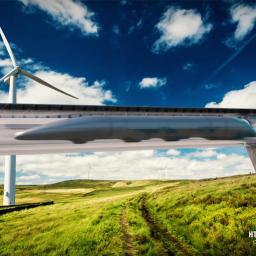
On Thursday, Elon Musk revealed his company "Will be building a Hyperloop test track for companies and student teams to test out their pods. Most likely in Texas." This coincides with his meeting with Texas lawmakers to ease restrictions on sales of his electric luxury cars as he floated the prospect of locating a new car factory or a test facility for his "hyperloop" high-speed mass transit system concept in the state. A Tesla spokesman said Musk's comments about the factory and the hyperloop test track were part of a "wide-ranging discussion in Austin, Texas about Texas matters," and
not an attempt to link those potential investments to a resolution of the dealership matter. Musk's SpaceX space transport company already has a rocket development facility in the state.
Musk's concept of a hyperloop would be an alternative to air travel or high speed trains for travel between cities several hundreds of miles apart. It would work similarly to an air hockey table, but instead of floating on a cushion of air, electromagnetic pulses would propel pressurized cabins inside elevated tubes. Theoretically, the resulting
system could reach speeds approaching 800 mph, faster than the speed of sound, through tubes held up by pylons. The system still needs years of testing, and as much as $10 billion to create even just one 400-mile (San Francisco to Los Angeles) stretch.
According to a new report from the National Institute of Medicine, U.S. Air Force reservists who (a decade after the Vietnam War) worked in C-123 aircraft that had sprayed Agent Orange during the war,
were exposed to dangerous levels of the herbicide. Even as recently as 2009, samples taken from the aircraft showed the presence of Agent Orange residues in or above the cautionary range.
Agent Orange contained "minute traces" of 2,3,7,8-tetrachlorodibenzo-p-dioxin (TCDD), more commonly known as dioxin. Through studies done on laboratory animals,
dioxin has been shown to be highly toxic even in minute doses; human exposure to the chemical could be associated with serious health issues such as muscular dysfunction, inflammation, birth defects, nervous system disorders and even the development of various cancers. Returning Vietnam veterans and their families reported a range of afflictions, including rashes and other skin irritations, miscarriages, psychological symptoms, Type-2 diabetes, birth defects in children and cancers such as Hodgkin's disease, prostate cancer and leukemia.
The Agent Orange Act of 1991 provides health care and disability coverage for health conditions that have been deemed presumptively service-related and due to herbicide exposure during the Vietnam War. The 1,500 to 2,100 U.S. Air Force Reserve personnel who worked aboard these C-123 aircraft are currently ineligible to receive benefits, as it has thus-far been restricted to "boots on the ground" servicemen.
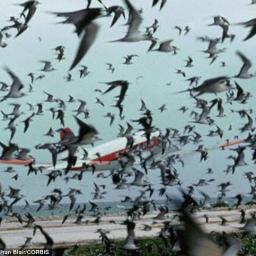
It has long been a mystery why quick and agile birds cannot out-maneuver automobiles and jetliners. This results in the deaths of thousands of birds every year and can injure drivers or cause potentially catastrophic jet engine failures. It's been estimated that bird strikes cause $400 million of damage every year in the US and up to $1.2 billion damage to commercial aircraft globally.
To work out why the strikes happen, a team of scientists from the US Department of Agriculture's National Wildlife Research Center in Ohio, Indiana State University and Purdue University, also in Indiana, used virtual reality, to avoid injuring birds. Researchers found that
birds start to fly away from a vehicle when it is 98 ft (30 meters) away, no matter its speed. Thus they left too late to escape vehicles traveling faster than 75 mph (120kph).
The scientists suggested that installing lights on aircraft could warn the birds to flee from a longer distance away, reducing avian deaths.
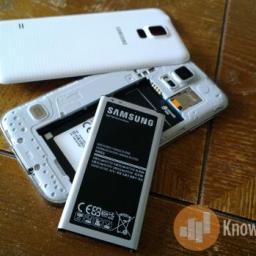
People want their mobile phones and tablets to last a week from a single charge. But sadly we're still no closer to that goal. At CES this week, StoreDot-an Israeli technology company, has
demonstrated a battery that fits inside a Galaxy S3 and can charge from dead to full inside two minutes.
How does it work? Researchers discovered tiny naturally occurring crystals that were able to store a charge or emit light. The crystals - dubbed NanoDots - are two nanometers in diameter and contain short chains of amino acids called peptides. They cover 'cavities' over an electrode in a standard battery. This extends how much of the battery can be used to create a reaction, which leads to a charge. Through the addition of the NanoDots, the electrode becomes "multi-function" - at one end, the electrode stores electrical energy creating a capacitor, and at the other, lets it flow into the battery's lithium.
In layman's terms, StoreDot has created a 'buffer' that stores electrical current coming from the wall socket over a period of around thirty seconds, then letting it flow slowly into the lithium. Myersdorf says that eventually, the company
plans to get rid of the lithium in the battery altogether. The battery life of the cell is just five hours, according to StoreDot, obviously way behind existing Li-Ion batteries. But this doesn't matter when the unit can be charged so quickly; you just give it a quick top up whenever it needs one and within seconds you'll have a full charge.
A recent report by Germany's Federal Office for Information Security reveals that
hackers caused "massive" damage to an unnamed steel mill. They did so by manipulating and disrupting control systems to such a degree that a blast furnace could not be properly shut down. The report doesn't name the plant or indicate when the breach occurred.
This is only the second confirmed case in which a wholly digital attack caused physical destruction of equipment. The first case, of course, was Stuxnet, the sophisticated digital weapon the U.S. and Israel launched against control systems in Iran in 2008 to sabotage centrifuges at a uranium enrichment plant. Industrial control systems have been found to be rife with vulnerabilities, though they manage critical systems in the electric grid, in water treatment plants and chemical facilities and even in hospitals and financial networks.
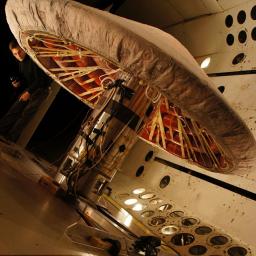
How do you get humans to Mars? Apparently in a giant mushroom.
NASA engineers believe a
lightweight, inflatable heat shield is necessary to sufficiently slow a craft entering a Martian atmosphere, which is much thinner than Earth's. Filled with nitrogen and covered with a thermal blanket, once deployed for landing the spacecraft resembles a giant mushroom. New technology is needed because the type of spacecraft that would land humans on the red planet would be much larger than anything that has landed on the planet previously. NASA engineers have been working on the inflatable technology for about a decade, and believe it is close to being ready for operational use. A test of re-entry into Earth's atmosphere is scheduled for 2016
Back in 2007, NASA engineers gave an
in-depth explanation of the non-obvious difficulties with landing heavy payloads on the surface of Mars. Rockets alone can't be used to land a large craft on Mars, as on the Moon, due to higher gravity. Parachutes also will not work sufficiently in Mars' thin atmosphere for the heavy spacecraft needed to deliver humans to the planet.
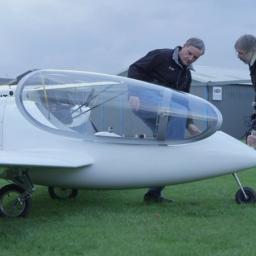
Researchers from the University of Cambridge, in association with Boeing, tested the first aircraft to be powered by a parallel
hybrid-electric propulsion system, where an electric motor and petrol engine work together to drive the propeller. The demonstrator aircraft uses up to 30 per cent less fuel than a comparable plane with a petrol-only engine. The aircraft is also able to recharge its batteries in flight.
Though increasingly common in the automotive industry, the technology has
never before been brought to the aerospace sector. During take-off and climb, when maximum power is required, the engine and motor work together to power the plane, but once cruising height is reached, the electric motor can be switched into generator mode to recharge the batteries or used in motor assist mode to minimise fuel consumption. The same principle at work in a hybrid car.
Recently, Soylent News
discussed adding more labels to the moderation system. Although opinions on "Disagree" and "Factually Incorrect" may still be varied,
nearly everyone supported the addition of a "Spam" label.
For Pipedot, we've gone ahead and added the later. Moderating a comment as "Spam" will decrease its score by one and flag it for further review by an editor. This way, normal users can greatly help the editors identify junk comments.
Once an editor marks a comment as spam, the message will be "hidden" one step deeper than the normal "Hide Threshold" slider setting. However, comments are never deleted. If you want to continue to see all comments, including the spam, click the "Show Junk Comments" checkbox on your profile settings page. Similar to the current blue (new) and gray (seen) rendering, the title bar of junk comments will be colored red to easily differentiate them from the good stuff.




